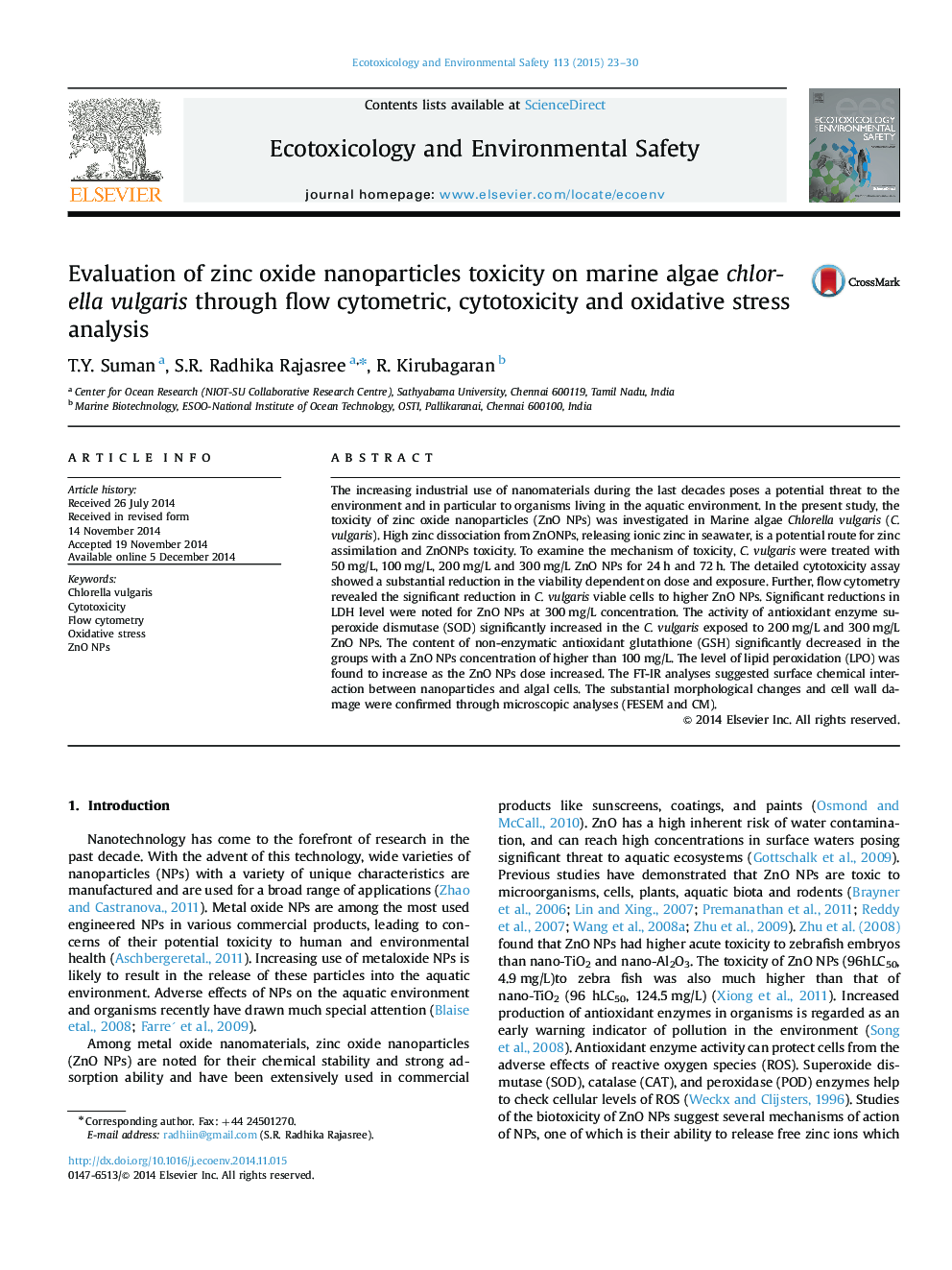| کد مقاله | کد نشریه | سال انتشار | مقاله انگلیسی | نسخه تمام متن |
|---|---|---|---|---|
| 4419661 | 1618950 | 2015 | 8 صفحه PDF | دانلود رایگان |
• Flow cytometry, cytotoxicity, oxidative damage of ZnO NPs towards Marine microalgae Chlorella vulgaris.
• ZnO NPs showed cytotoxic towards Marine microalgae Chlorella vulgaris and induce significant oxidative stress.
• Further it proved by using flow cytometry analysis result showed as zinc oxide nanoparticles concentration increased, cell viability is decreased.
The increasing industrial use of nanomaterials during the last decades poses a potential threat to the environment and in particular to organisms living in the aquatic environment. In the present study, the toxicity of zinc oxide nanoparticles (ZnO NPs) was investigated in Marine algae Chlorella vulgaris (C. vulgaris). High zinc dissociation from ZnONPs, releasing ionic zinc in seawater, is a potential route for zinc assimilation and ZnONPs toxicity. To examine the mechanism of toxicity, C. vulgaris were treated with 50 mg/L, 100 mg/L, 200 mg/L and 300 mg/L ZnO NPs for 24 h and 72 h. The detailed cytotoxicity assay showed a substantial reduction in the viability dependent on dose and exposure. Further, flow cytometry revealed the significant reduction in C. vulgaris viable cells to higher ZnO NPs. Significant reductions in LDH level were noted for ZnO NPs at 300 mg/L concentration. The activity of antioxidant enzyme superoxide dismutase (SOD) significantly increased in the C. vulgaris exposed to 200 mg/L and 300 mg/L ZnO NPs. The content of non-enzymatic antioxidant glutathione (GSH) significantly decreased in the groups with a ZnO NPs concentration of higher than 100 mg/L. The level of lipid peroxidation (LPO) was found to increase as the ZnO NPs dose increased. The FT-IR analyses suggested surface chemical interaction between nanoparticles and algal cells. The substantial morphological changes and cell wall damage were confirmed through microscopic analyses (FESEM and CM).
Figure optionsDownload as PowerPoint slide
Journal: Ecotoxicology and Environmental Safety - Volume 113, March 2015, Pages 23–30
